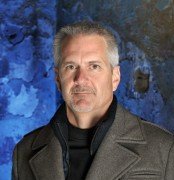In my last post, “The Department of Redundancy Department,” I discussed how I use the Find feature of Microsoft Word to hunt down and eliminate redundant redundancies from my manuscripts as I go through the final edit. I also mentioned how I’ll use Find to ferret out those pesky to be verbs and get rid of as many of those as I can. Another great use of the tool–and one that can keep you from looking amateurish in the eyes of agents, editors and readers–is to make sure you’ve used that, which and who properly.
Let’s start with that and which. That is a defining, or restrictive pronoun that introduces an essential clause. Which is a non-defining, or nonrestrictive pronoun that introduces non-essential clauses. But you don’t need to know that. Just remember, when you use that, it is not preceded by a comma because it defines something. When you use which, it is preceded by a comma because it adds additional, but non-vital information. For example:
The yellow brick road that leads to the Emerald City starts over there. (defines)
The yellow brick road, which leads to the Emerald City, starts over there. (gives additional information)
Now let’s look at the use of that and who when referring to persons versus objects. When referring to people, who is used to specify an individual, and that is used when referencing a class, type or group of individuals. When specifying an inanimate object, that is used. But what about live creatures? Common usage suggests that if an animal is referenced nonspecifically, usethat. If the animal has a name, use who. Some examples:
Glenda, who is considered the good witch, just touched down in her bubble.
Witches that fly on brooms are generally considered wicked.
The broomstick that belonged to the wicked witch is now in Dorothy’s hands.
The flying monkey that shredded the scarecrow flew away.
Sparky, the flying monkey who shredded the scarecrow, flew away.
And don’t forget that that, which and who are pronouns and should be placed as close to their antecedents as possible.
Now, back to the Find feature. When doing your final edit, use it to take a look at every that,which and who to make sure that and which are used correctly, that and who are used appropriately, and the commas are where they’re supposed to be.
By author Richard Van Anderson of rvananderson.com


Thanks for the tips. Here’s mine, which goes along with the use of the word “which.” You wrote that “which” should be preceded by a comma. Also, if the phrase can be omitted it should be set off by commas, like the example you gave with the yellow brick road.
Hi Linda. Thanks for the comment.
Pefect, I needed that! (no pun intended)
Glad to help.